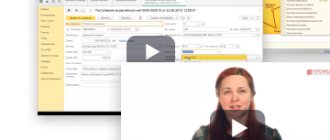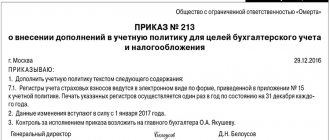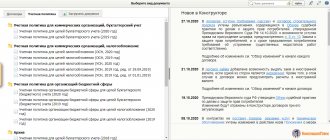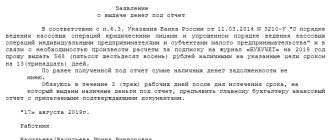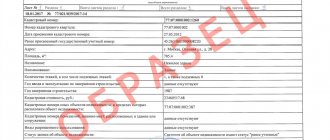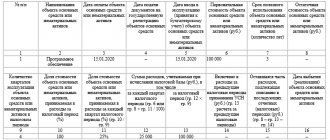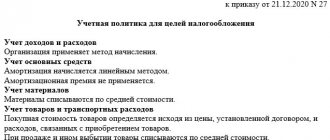What to do?
The first thing that comes to mind is to take advantage of the rich capabilities of the 1C program in terms of its modification. But this path is absolutely not advisable:
1. The cost and complexity of such modifications are significantly higher than the cost of switching to another solution from 1C.
2. Cost and complexity of program maintenance.
The second option for solving the problem is to take a standard 1C program with the necessary functions and, on its basis, build a full-fledged enterprise accounting and management system, part of which will be accounting for defense orders. The option is certainly good, but it will require a long study of the program’s capabilities and qualified work of 1C specialists when setting it up.
When is it necessary to keep separate VAT records?
An organization acquires goods, works and services that it can use in taxable and non-VAT-taxable transactions.
In each case, the tax is taken into account differently. If the purchase is used in taxable transactions, VAT is deducted. If non-taxable, the tax is included in the cost of products sold. When a company has both operations, VAT is divided. This situation can be seen in the VAT return - there is filled out section 3 “Taxable transactions” and section 7 “Non-taxable transactions”.
You need to account for VAT separately if you:
- You carry out activities subject to VAT, but at the same time you carry out transactions that are exempt from tax under Art. 149 of the Tax Code of the Russian Federation or are not subject to VAT under Art. 146 of the Tax Code of the Russian Federation.
- You combine transactions subject to VAT with transactions whose place of sale is not recognized as Russia.
- Combine OSNO with UTII.
- You carry out transactions for which the right to deduct VAT arises in a different order. For example, you are conducting operations, for some of which the right to deduction arises at the time the tax base is determined, for another part - after the goods are accepted for accounting.
- You purchase goods using subsidies, with the exception of those issued from the federal budget in connection with COVID-19.
- You sell goods, works or services with a long production cycle and charge VAT only at the time of shipment.
In the article we will consider separate accounting of taxable and non-taxable VAT transactions.
Keep separate VAT records to understand which part of the tax to deduct and which to include as expenses when calculating income tax. Specify the procedure for separate accounting in the accounting policy.
If there is no separate accounting, input VAT can neither be deducted nor taken into account as expenses. During the audit, the tax office will restore the entire input VAT on goods used in two types of transactions, and then a VAT arrears will appear, on which penalties and fines will be charged.
A reliable solution for automating the accounting of government defense orders
Take advantage of a ready-made solution developed by our specialists. You will receive a professionally configured program, user documentation and reliable support for your system.
Comprehensive
A ready-made solution for automating the accounting of defense orders for trade, small manufacturing and service enterprises, as well as companies that have already implemented the 1C: Integrated Automation, 1C: Accounting, 1C: Trade Management program.
Go
SCP
A ready-made solution for automating state defense accounting for enterprises that have implemented and are actively using the 1C: Manufacturing Enterprise Management program.
Go
ERP
A ready-made solution for automating the accounting of state defense orders for manufacturing and large service enterprises, as well as organizations already using the 1C:ERP product.
Go
Consultation on accounting for state orders in 1C Accounting
How to properly organize accounting policies for state defense orders?
The contractor is required to maintain separate accounting for state defense orders for each contract.
It is necessary in order to report to customers and regulatory services, as well as justify the expenditure of budget funds. Maintaining separate accounting for contracts ensures obtaining reliable information about the actual expenses of the enterprise when producing state defense orders, which is so necessary to maintain a balance of interests of the state customer and state defense contractors when calculating prices for products. Also, maintaining separate accounting can provide significant benefits directly to the organizations implementing the state defense order. It allows, during the implementation of state defense contracts, to diagnose various types of risks and respond to them in a timely manner, without leading the situation to undesirable consequences.
To properly maintain separate accounting, it is necessary to organize analytical accounting of the required detail, as well as develop and consolidate in the accounting policy a separate accounting methodology. To develop such a methodology, in addition to general accounting provisions, the contractor of the state defense order should be guided by:
- Rules for maintaining separate accounting of the results of financial and economic activities by organizations carrying out state orders at the expense of the federal budget, approved by Decree of the Government of the Russian Federation of January 19, 1998 N 47 (hereinafter referred to as Rules N 47);
- The procedure for determining the composition of costs for the production of defense products supplied under the state defense order, approved by Order of the Ministry of Industry and Energy of Russia dated August 23, 2006 N 200 (hereinafter referred to as Procedure N 200)
In general, the organization of separate accounting at each enterprise is formed individually. A specific methodology is an element of the accounting policy (its section or appendix), but can also be formalized in the form of an independent corporate regulation for separate accounting or a separate instruction. When checking the availability of separate accounting, the prosecutor's office requests from the executors of the State Defense Order, in addition to primary documents, orders, cost calculations, balance sheets for the accounts of goods, materials, income, expenses, etc. And here lies the danger, since separate accounting of state defense orders differs significantly from separate accounting and tax accounting.
We list the mandatory attributes of compliance with separate accounting requirements:
- Opening (maintaining) a separate order for each contract;
- Documentary evidence of direct expenses;
- Proportionate allocation of overhead and selling expenses.
The basic principles of maintaining separate records of the FCD (47 PP) can be considered:
- Accounting object. Selection (definition) of an accounting unit.
- Requirements for the preparation of primary accounting documentation and maintenance of analytical accounting registers.
- The procedure for distribution of overhead and commercial expenses.
- The procedure for determining financial results.
The implementation of the principle of separate accounting is carried out through five important points:
- Definitions of the principle of separate accounting in accounting policies;
- Regulation of the procedure for opening (closing) an order;
- Establishing requirements for document flow, incl. to the preparation of primary accounting documents (limit cards, time sheets, write-off acts, work orders, etc.);
- Formation of the cost per unit of production (the order of attribution of direct and indirect costs);
- Generating reporting documents for executed contracts indicating profits and preparing reporting calculations
From May 14, 2021, the procedure for separate accounting of state defense orders has changed (Resolution of the Government of the Russian Federation of May 4, 2021 N 543). Now the organization that carries out the state defense order and participates in the supply of products under the state defense order (executor, participant in cooperation) records production and commercial costs, obligations (accounts receivable and payable), cash, property rights, inventories, fixed assets, intangible assets, etc. P. separately for each government contract.
The amendments introduced by Government Decree No. 543 dated May 4, 2018, and which entered into force on May 14, 2021, introduce special rules for maintaining separate records for organizations carrying out state defense orders. These rules apply not only to the lead contractors of the state defense order, but also to organizations participating in the supply of products under the state defense order (executors, participants in cooperation). Now the organization that carries out the state defense order and participates in the supply of products under the state defense order (executor, participant in cooperation) records production and commercial costs, obligations (accounts receivable and payable), cash, property rights, inventories, fixed assets, intangible assets, etc. P. separately for each government contract.
The new rules define uniform principles and methods for maintaining separate accounting, establish new forms of reporting when executing government contracts (contracts), regulate the procedure for monitoring (comparing) the process of pricing and stages of financing work under a government contract, incl. for ongoing monitoring of actual profit indicators and targeted spending of funds from special (separate and personal) accounts.
Also, from July 1, 2021, the rules for closed procurement in the field of state defense procurement have changed in accordance with the Decree of the Government of the Russian Federation of November 27, 2017 No. 1428. In connection with the tightening of responsibility, it is imperative to have up-to-date information on further changes in the field of procurement for defense and security needs.
In order to adapt to new laws, which will entail large-scale changes in the processes of planning, budgeting, contracting and other aspects of the life of enterprises, teachers of our center for advanced training prepared an expert consultation seminar on problematic issues of everyday practice in the field of separate accounting of the results of financial and economic activities , cost calculation and rationing of material resources, pricing and cost justification, as well as banking and treasury support:
STATE DEFENSE ORDER in 2021 PRACTICAL ISSUES OF SEPARATE ACCOUNTING, COST RATING, PRICING, BANKING AND TREASURY SUPPORT.
Based on the analysis of the results of control activities and generalization of the practice of bringing to administrative responsibility, the seminar will also give practical recommendations on organizing and maintaining separate records of the results of the FCD when implementing the state defense order.
How to organize separate VAT accounting - draw up an accounting policy
There are no rules in the Tax Code that require separate VAT accounting. Organizations and entrepreneurs develop them independently and consolidate them in their accounting policies. When combining taxable and non-taxable transactions, four procedures must be specified in the document.
- How to keep separate records of taxable and non-taxable transactions. This can be done on subaccounts or in separate registers. For example, they often open second-order subaccounts to subaccount 90-1 “Revenue” and divide the proceeds from taxable and VAT-exempt transactions. If you want to keep records in tax registers, write down their form and procedure.
- How to account for input VAT on taxable and non-taxable transactions. The developed rules should help to separately account for “input” VAT for the following groups of goods: For separate accounting of VAT, subaccounts are usually opened to account 19 “Value added tax on acquired values” for each of the groups. Another option is to develop special tax accounting registers.
- fully used in taxable transactions - input VAT is accepted for deduction in full;
- fully used in non-taxable transactions - input VAT is included in expenses as part of the cost of the goods;
- used in both taxable and non-taxable transactions - input VAT is distributed in proportion to the share of taxable and non-taxable transactions in the total volume and is deducted or expensed accordingly.
- Should the 5 percent rule apply? (clause 4 of article 170 of the Tax Code of the Russian Federation). If you decide to use it, additionally determine:
- the procedure for generating calculation indicators - expenses for taxable and non-taxable transactions and the total amount of expenses;
- a form of accounting certificate, which is generated based on the results of checking compliance with the rule.
- How to calculate the proportion for the distribution of input VAT on goods, works and services that are used in taxable and non-taxable transactions. Write down the procedure for calculating the proportion and determine the form of the certificate or other document in which this calculation of the proportion will be shown.
Keep records of exports and imports in the Kontur.Accounting web service. Simple accounting, payroll and reporting in one service
